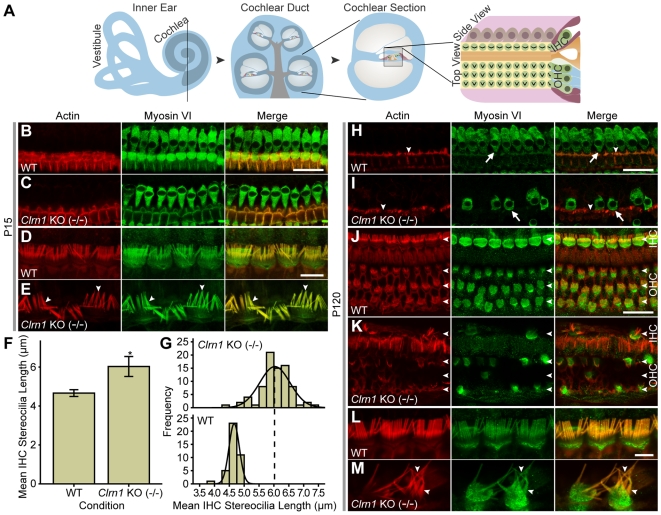Figure 8. Cochlear hair cells of Clrn1 KO (−/−) mice degenerate with age and exhibit longer stereocilia.
(A) Illustration of the inner ear, demonstrating the cochlea and auditory sensory epithelium. (B–E) Immunofluorescent confocal images of P15 and mouse inner-ear epithelia harvested from the middle turn of the cochlea, shown in side view. Filamentous actin was detected with rhodamine-Phalloidin (red), and anti-myosin VI labeling is shown in green. (B,C) At P15, the auditory epithelium in Clrn1 KO (−/−) (C) mice appears morphologically similar to WT animals (B). (D) WT animals maintain organized stereocilia on inner hair cells (IHCs). (E) Subtle IHC stereociliar abnormalities such as increased bundling and lengthening (arrowheads) are evident in KO animals at P15. (F,G) Quantitative analysis of IHC bundle lengths reveal considerably longer stereocilia (F) in P15 Clrn1 KO animals, distributed over a broader range of lengths (G, upper graph; n = 80), which is distinguishable from the highly uniform lengths of WT stereocilia (G, lower graph; n = 40). (H,I) Shown from the side view at P120, and compared to WT labeling (H), staining of Clrn1 KO auditory epithelia (I) indicates extensive degeneration and loss of IHCs. At this age, a disruption of supporting cell apical surfaces is apparent (I, arrowheads), and the surviving IHCs in the auditory epithelia of Clrn1 KO mice exhibit shortened hair cell bodies (I, arrows). (J,K) From a top view, a clear disruption and loss of both IHCs and OHCs is evident in the Clrn1 KO mutant (K, arrowheads). (L,M) IHCs from WT cochleas (L) possess highly ordered and symmetrical stereocilia, while Clrn1 KO IHCs (M) exhibit profoundly disorganized bundles of elongated and possibly fused stereocilia (arrowheads). * = P<0.001. Error bars = 1 SD. Scale bars: In B (25 µm) applies to B and C; in D (7.5 µm) applies to D and E, in H (25 µm) applies to H and I, in J (20 µm) applies to J and K, in L (5 µm) applies to L and M.

